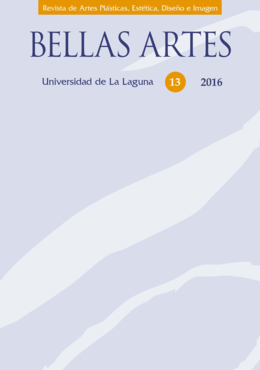La introspección en la convergencia del arte y la neurociencia
Resumen
Si consideramos que el arte es una de las más elevadas expresiones de la actividad mental, única al hombre y sublimación de nuestra interpretación del mundo, una mejor comprensión de los procesos neurobiológicos de la creatividad artística podría aportar nuevos elementos claves sobre la génesis de la obra del artista. Numerosas evidencias científicas recientes en el campo de las neurociencias sobre la naturaleza de la memoria han revolucionado el cono-cimiento sobre los procesos mentales subjetivos de memorización, rememoración y síntesis creativa; y proponen la necesidad de desplazar el análisis a la primera persona (introspección) para dar una visión más veraz. El presente artículo es una reflexión sobre el importante reto que constituye la traslación de estas nuevas evidencias neurológicas al arte mediante la introspección, visión innovadora más acorde con la ciencia de nuestro tiempo.
Citas
Kawabata, H. y Zeki, S. (2004). Neural correlates of beauty. J Neurophysiol. 91: 1699-705.
D’Argyll, P. y Fernández-Martínez, D. (2013). «A new proposal on analysis of artistic creativity through introspection». The Journal of Arts & Humanities. 2(5), 20-27.
D’Argyll, P. y Fernández-Martínez, D. (2014). «Traslación de la teoría de Francisco Varela al arte: análisis de la creación artística a través de la introspección». Revista Hispanoamericana. Publicación digital de la Real Academia Hispano Americana de Ciencias, Artes y Letras. N.º 4, 1-13.
Sánchez-Ramón, M. (2005). Escritura e imagen en Yves Bonnefoy. Una aproximación desde la historia del arte. Madrid: Escritura e Imagen, 41-58.
Varela, F.J., Thompson, E. y Rosch, E. (1991). The Embodied Mind: Cognitive Science and Human Experience. Cambridge: MIT Press.
Varela, F.J. y Shear, J. (1996). Neurophenomenology: A methodological remedy for the hard problem. Journal of Consciousness Studies: Special Issues on the Hard Problems, 330-344.
Moser, E.I.; Moser, M.-B. y Roudi, Y. (2014). Network mechanisms for grid cells. Phil Trans R Soc B. 369: 20120511.
Moser, E.I. y Moser, M.-B. (2013). Grid cells and neural encoding in high-end cortices. Neuron 80; 765-774.
Kausik, S., Giustetto, M., Etkin, A., Hsu, R., Janisiewicz, A.M., Miniaci, M.C., Kim, J.H., Zhu, H. y Kandel, E.R. (2003). A Neuronal Isoform of CPEB Regulates Local Protein Synthesis and Stabilizes Synapse-Specific Long-Term Facilitation in Aplysia. Cell, 115, (7): 893-904.
Proust, M. (1987). À la recherche du temps perdu. Paris: Bibliothèque de la Pléiade (Ed. 100).
Grimaldi, N. (2012) Un été avec Proust. http://www.franceinter.fr/emission-un-ete-avec-proustnicolas-grimaldi-lecteur-de-proust (fecha de consulta: 19 de agosto de 2013).
Vont-Réaulx, D. (2014). Catálogo de la exposición «Delacroix - Objets dans la peinture, souvenir du Maroc». Ed. du Louvre/Le Passage.
Jiménez, J. (2013). Catálogo de la exposición «El Surrealismo y el sueño». Ed. Museo Thyssen-Bornemisza.
Changeux, J.-P. (1996). Razón y placer. Barcelona: Metatemas, 46.
Ramón y Cajal, S. (1894) La fine structure des centres nerveux. The Croonian Lecture. London: Separata de: Proceedings of the Royal Society, vol. 55. Sign.: Fo 486(4). Biblioteca Facultad de Medicina. UCM: 445-468.
Los trabajos publicados en esta revista son propiedad de sus respectivos autores y autoras, quienes conceden a la revista Bellas Artes el derecho de primera publicación, tal y como se recoge en nuestra Política de derechos de autoría.




